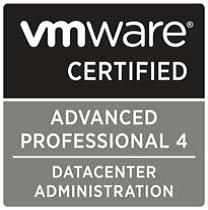Where to get general information. Before beginning with any project you need to get some general information about it first. The Apache Cloudstack documentation is not great but it’s not horrible either. In most cases, I think it gets the job done in explaining the architecture, design and how to get the product installed...
Read More »
theHyperadvisor
Posts Tagged ‘ apache cloudstack ’
3 Things you need to know when getting started with Cloudstack
The Quickest “Zero to Cloudstack” Deployment tool has been updated!
CloudStack Deploy is a utility for making Apache CloudStack and KVM installations quick, easy and painless whether you’re deploying to a single server or many. Meant to be reusable so you can deploy Apache CloudStack more than once after you’ve downloaded the RPMS and systemtemplates locally with cldstk-deploy. What’s new with cldstk-deploy The main...
Read More »
Enabling Cloudstack Usage Server in 4.3
You should have the “cloudstack-usage” packages installed already. In the CloudStack management portal go to > Global Settings then type “usage” in the search and you should see the following shown below. Now make changes to the following items. The usage server should already be enabled by default. Use your own preferred timezone for...
Read More »
CloudStack 4.3 and LDAP Integration Setup
CloudStack 4.3 has change the way you configure Microsoft Active Directory (AD) integration a bit and I wanted to do a more up to date tutorial of how to set it up. This is only getting better going forward but here is what you have to do today out of the box in the...
Read More »
CloudStack Collaboration Conference North America 2014 Videos Online
If you couldn’t make it out to CloudStack Collaboration Conference North America (CCCNA) 2014 this year like me you’d be happy to know that the session videos are now online. You can find them over at the Apache Foundations Youtube page but here’s a link. VIDEOS FOUND HERE
Read More »
Deploy Apache CloudStack with cldstk-deploy, now on Github.
CloudStack Deploy is a utility for making Apache CloudStack and KVM installations quick, easy and painless. Meant to be reusable so you can deploy Apache CloudStack more than once after you’ve downloaded the RPMS and systemtemplates locally with cldstk-deploy. Features can pre download Apache CloudStack RPMS (version 4.2 & 4.3) can pre download KVM...
Read More »
Automating Apache Cloudstack Deployments with Ansible
I wrote a post awhile back about using node.js, ansible, and python to do my apache cloudstack installation. Ansible is great but I basically used python to make using ansible a bit more easy since there are a few things with any ansible setup which needs to be remembered. One of those things is...
Read More »
CloudStack 4.2 and LDAP Authentication
Need to leverage Active Directory (AD) authentication in CloudStack? Well here's how it can be done. I much simpler in 4.2 than it used to be and can be configured from the management portal. One of the only complaints is that you'll still need to create an account in CloudStack then map an attribute...
Read More »
CentOS Linux Template Networking Issue
If you have every created a linux virtual machine template you’ve probably experienced the issue where a new ethernet device would be created on each VM instance created from that template. For those that have not found the resolution to this problem are in for a treat if your working with CentOS or RHEL....
Read More »
Cloudstack: API and Template Building Tip #1
The tip I have for you this time is to use CloudStacks interface for accessing meta-data about you instance from within the instance. It’s very simple to use and can be very useful. In this tip I’ll show how you can use the meta-data to rename a CentOS 6.4 linux instance automatically after it...
Read More »




